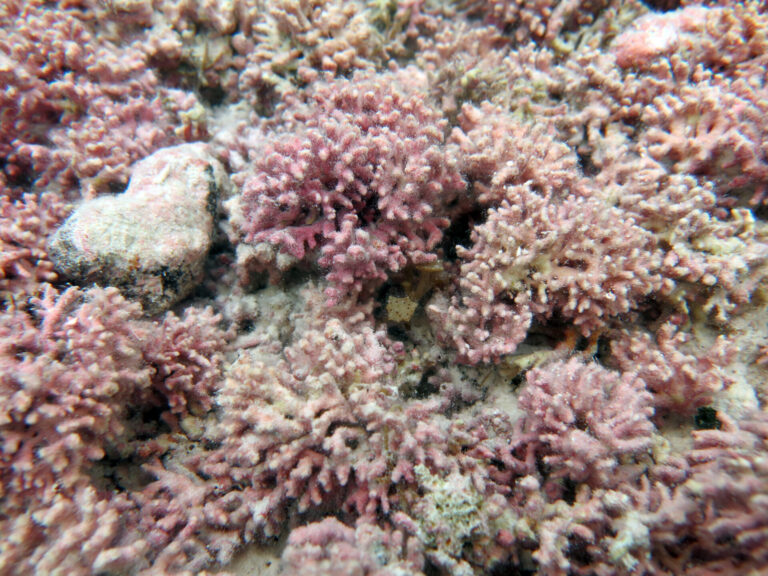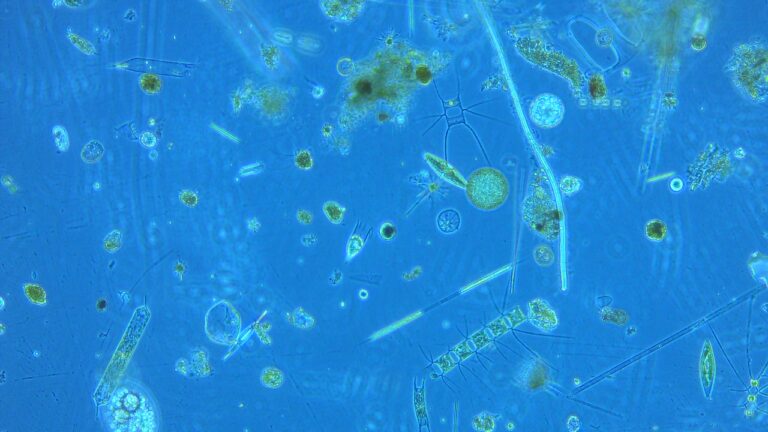Marine Science
A model for coral-algae relationships
Analysis of sea anemone genome yields unprecedented detail of anemone-algae symbiosis, and may provide a model for coral symbiosis.


Analysis of the complete genome for the sea anemone Aiptasia helps in the understanding of cnidarian-algae symbiosis. Findings include a new class of proteins and groups of inherited genes coming from the algae, and suggest that Aiptasia can be a viable model for studying coral-algae symbiosis.
© 2015 KAUST
The sea anemone Aiptasia may be a viable model for investigating the mechanisms behind symbiotic relationships of algae with corals. New findings by researchers from KAUST and a team of international colleagues revealed a new class of proteins that provides important clues about how algae live with their undersea hosts.
The first complete genome of the sea anemone Aiptasia — which, like corals, has a symbiotic relationship with photosynthetic algae — has been assembled and analyzed by researchers to better understand the molecular and cellular processes that drive the synergistic partnership.
Symbiosis occurs when two separate organisms work closely together to survive. Coral polyps depend on symbiosis with a specific alga living within their tissues to maintain a healthy coral colony. The underlying mechanisms of this symbiotic relationship are little-known, partly due to the immense difficulties of carrying out experiments on live coral reefs.
“The symbiosis between coral and algae is the backbone of coral reef ecosystems,” explained Christian Voolstra, Associate Professor of Marine Science in KAUST’s Red Sea Research Center, who was part of the international research team. “With corals threatened by environmental change and anthropogenic impact, there is a need for a model organism that can help us understand corals’ responses to stress.”
Aiptasia can be easily studied under laboratory conditions. Similar to many corals, algae live inside Aiptasia and manufacture 90 percent of its energy. In return, the anemone provides the algae with a share of its nutrients and a sheltered environment.
When Voolstra’s team studied the genome for Aiptasia to learn about symbiosis, they were astonished by the wealth of information revealed by their analyses, including their discovery of a new class of proteins called cnidarian ficolin-like proteins, or CniFLs.
“CniFLs appear to be prime candidates for mediating recognition between the algae and the animal host,” Voolstra explained. “If we understand how these proteins work, we can identify algae that confer specific characteristics — for example, the ability to better tolerate heat — in the symbiont-host relationship. This knowledge could enable us to help corals switch to more resistant symbionts in impacted environments.”
The researchers were also surprised by the number of genes in Aiptasia that appear to be inherited from its algal (and also bacterial) symbionts. They are conducting further research into these genes at the same time as they study the CniFL proteins.
“Our analysis illustrates just how finely-tuned this metaorganism — the Aiptasia animal host, its symbiotic algae and its associated bacteria — is, and how it has evolved,” Voolstra said. “Creating a symbiosis model system will allow quantum leaps forward in our understanding of reef-building corals, providing critical guidance for practical applications in coral reef conservation.”
References
- Baumgarten, S., Simakov, O., Esherick, L.Y., Liew, Y.J., Lehnert, E. et al. The genome of Aiptasia, a sea anemone model for coral biology. Proceedings of the National Academy of Sciences 112, 11893-11898 (2015).| article
You might also like

Bioscience
Digging into the world of plant-growth-promoting microbes

Marine Science
Rhodoliths found in a surprise location

Bioscience
Unique microbiome discovered in mountain streams

Marine Science
Examining phytoplankton’s past to reduce future algal blooms

Marine Science
Extensive deep warm-water coral frameworks pinpointed in the Red Sea

Marine Science
Cheap fixes aid global coral reef conservation

Marine Science
Giving coral reefs a fighting chance for survival

Marine Science



